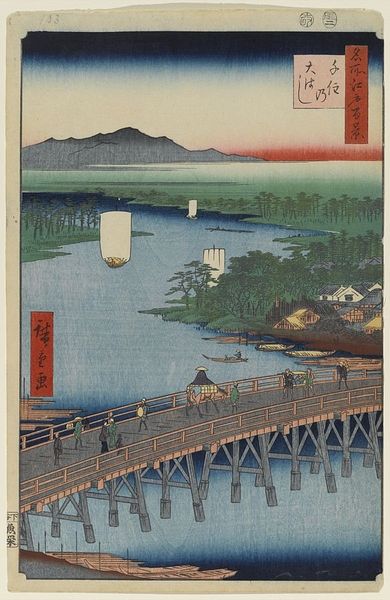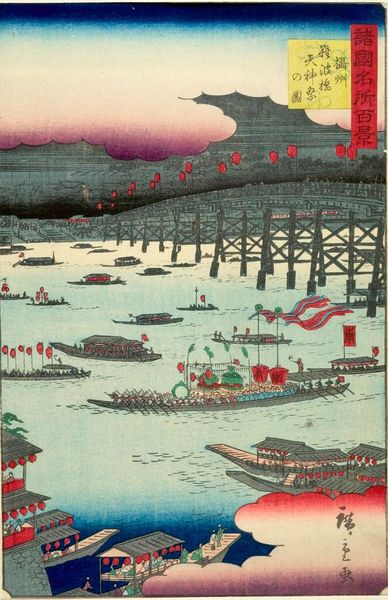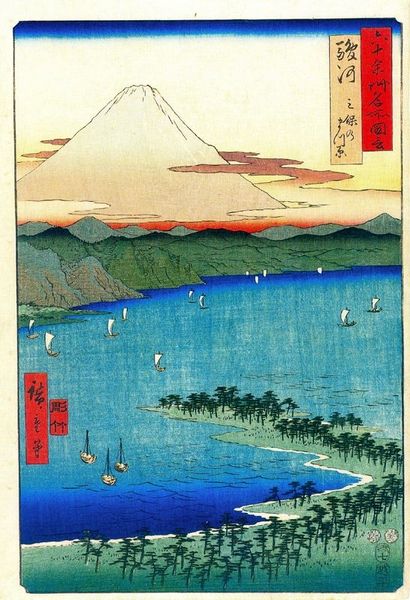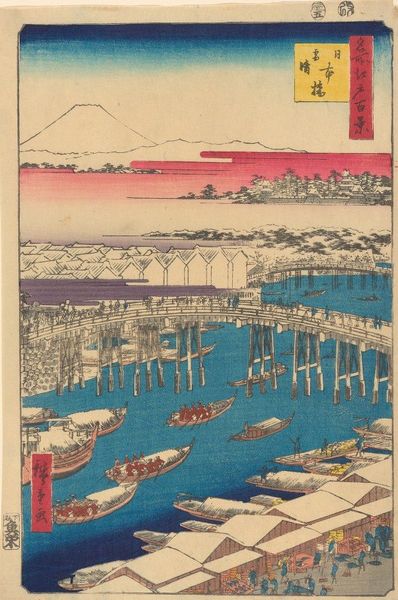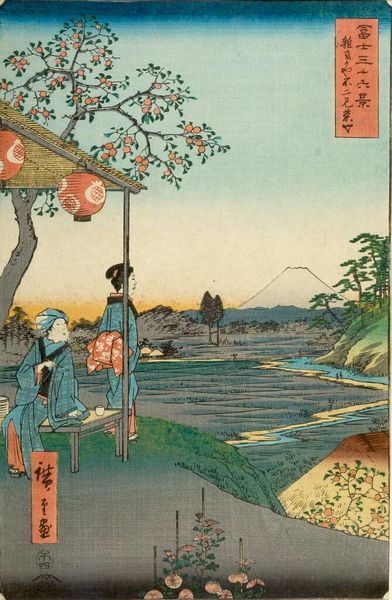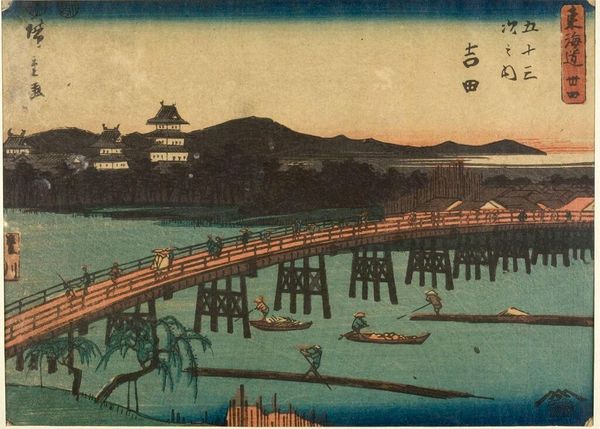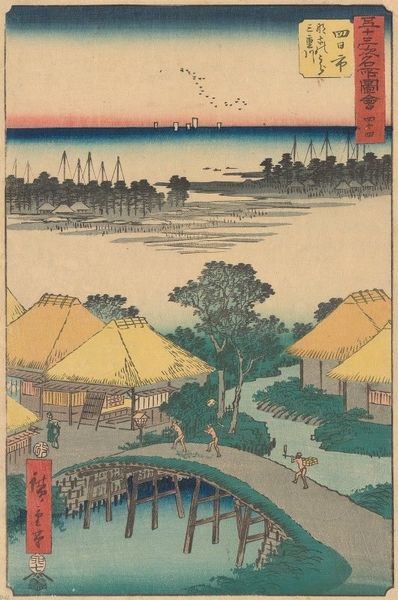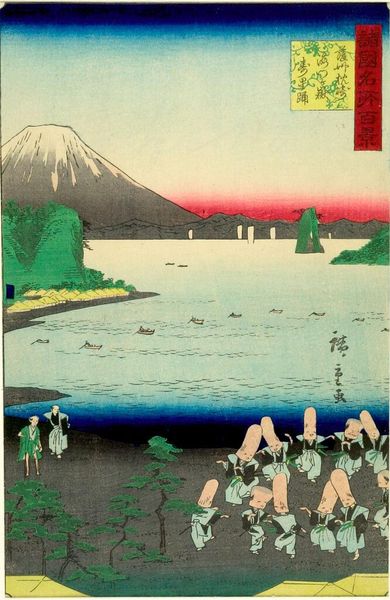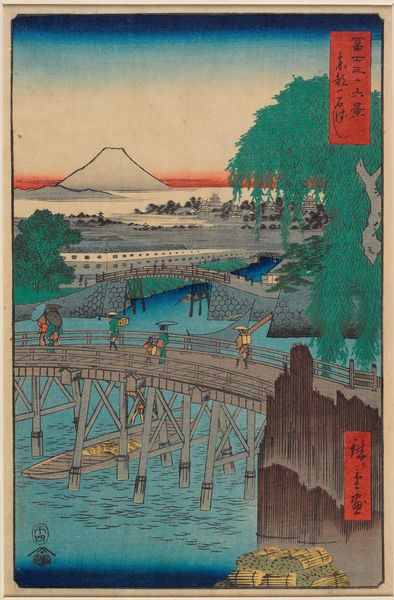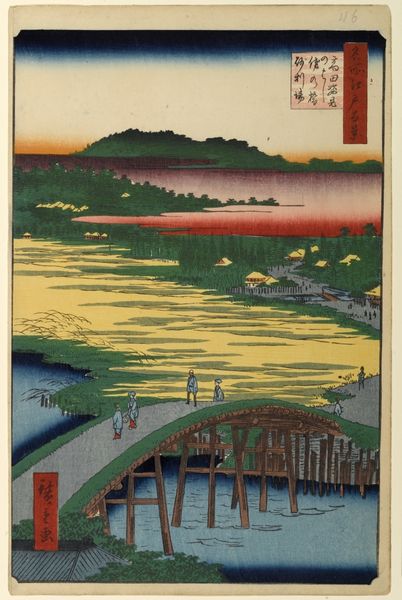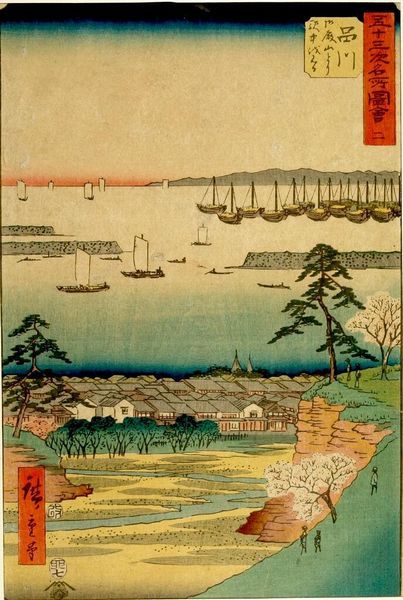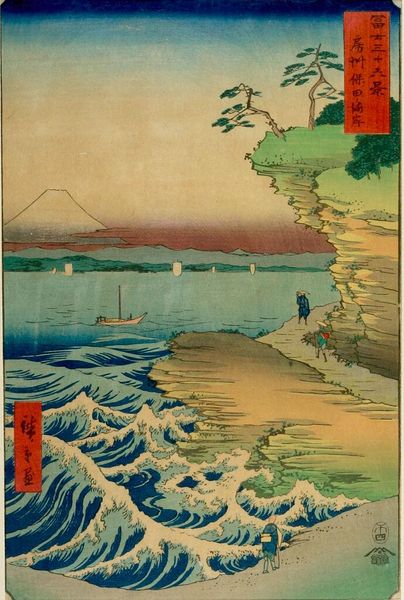
Senju Great Bridge (Senju no Åhashi), Number 103 from the series One Hundred Famous Views of Edo (Meisho Edo hyakkei) Possibly 1856
0:00
0:00
Dimensions: Paper: H. 35.5 vm x W. 25.3 cm (14 x 9 15/16 in.)
Copyright: CC0 1.0
Curator: Hiroshige's "Senju Great Bridge," part of his "One Hundred Famous Views of Edo," draws us into a bustling scene. The bridge dominates the foreground, stretching across a wide expanse of water. Editor: It feels so placid, though, despite the implied activity. The soft blues and greens create a sense of serenity. What's striking is how the people seem almost incidental to the landscape. Curator: These prints served a growing urban populace eager to connect with, and consume, images of their city. Bridges like Senju were vital arteries for commerce and social exchange, literally and figuratively linking different communities. Editor: So the bridge becomes a symbol of connection but also potentially of class and gender divides within Edo society? Who had access and who did not? Curator: Precisely. The bridge facilitates movement, but it also reflects power dynamics inherent in the Edo period’s social landscape. Editor: Thinking about it that way adds so much depth to what initially appears to be a simple landscape. Curator: Indeed, and hopefully reveals how even seemingly straightforward scenes can reflect complex social realities.
Comments
No comments
Be the first to comment and join the conversation on the ultimate creative platform.
